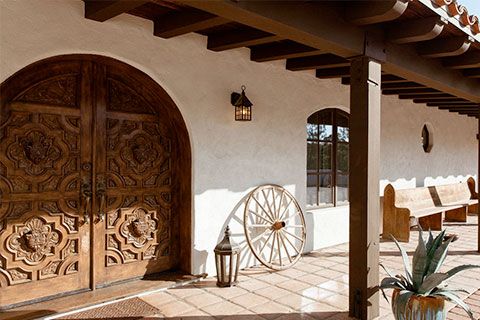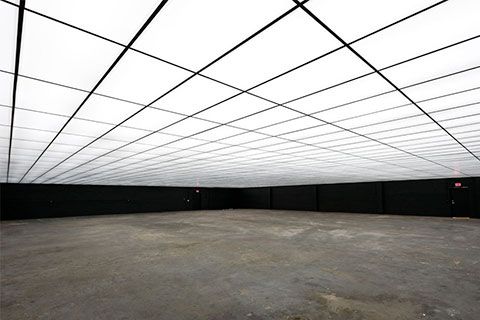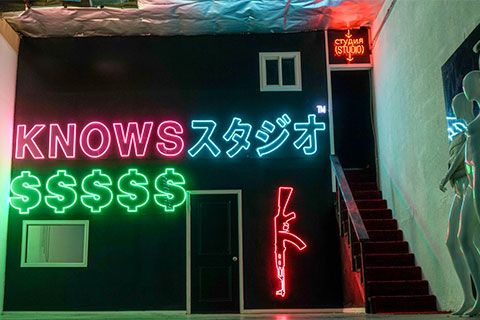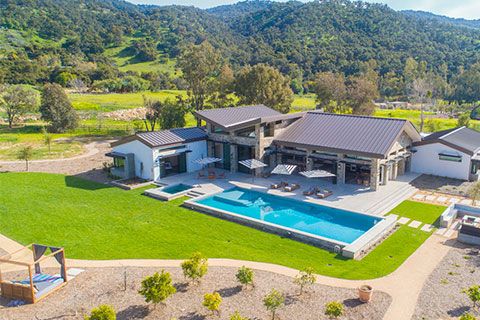5 Steps to a Successful Tech Scout
There’s always that ‘perfect location’ for a particular shot or sequence. As a location scout, director, or project head, the challenge of finding this location task falls on your shoulders.
Once you've scoured through expansive film shoot location lists and come up with a preliminary shortlist of locations that best fit your storyboard (using a website such as Giggster, perhaps), it's time to choose that perfect place that works best for your project. That’s where the tech scout comes in.
What’s a tech scout and how does it help?
Simply put, a tech scout, or a technical scout, involves visiting a location with an intention to figure out the final details of filming at the space. These requirements can be technical or legal in nature.
A tech scout will help figure out exactly what camera and lighting equipment you might require, what the legalities of using the space are, and how to make use of the property to the fullest.
It sounds like a lot, and it kind of is. Which is why it's also best if you take some of your crew members with you. If you don’t have your crew, that’s okay too, but it’s going to take a lot longer to go over the 5 different department roles.
First thing, be sure to carry a camera, a couple of stand-ins (traffic cones would do but you’d need to factor in the right height) and some pocket snacks, because it might take some time. Now with your camera in hand and snacks in your pocket, it's time to roll in!
Rent a location for your next film or photo shoot project on Giggster – A better way to book locations.






Let’s go over this by department.
1: Technical (The gaffer)
The technician of the group, the gaffer is arguably the one person who makes a property function as a set. Here’s a checklist for what the gaffer has to do at the tech scout:
a. Ask the property rep how many of the electrical fixtures work, and which of them you can use.
b. Check for outlets, and make sure to note where and how many are available.
c. Find the breaker box and ensure there’s a power grounded electric supply to run lights, cameras, hair and makeup, sound and anything else you’d need.
d. Be sure to note the order or label the outlets and breakers, this will really help save on time.
e. Check with the Director & DOP if there’s any special requirements in terms of equipment and ensure this meets the voltage limits. If not, use a separate circuit for these items.
f. Arrange for power and/or battery backup if you’re shooting outdoors.
2: Lights & Cameras (Director & DOP)

The duo with the most to do, the Director & DOP have to mentally play out the entire action in their minds, and then work backwards to figure out how to accomplish that in the space. So what does their checklist look like?
a. Make sure there’s enough space to set up the action as well as the equipment for each shot.
b. Are there any props/set changes? Take pictures and measure the dimensions. This will really help your set director.
c. Lights – how many, which ones and where? Be sure to account for natural lighting during the different times of day.
d. How many cameras are required? Do any of them need rigs or tracks? Any special filters? That’s another few questions to answer.
e. Ensure to allot a time frame for each shot so as to not waste time on the day of the shoot.
f. Be sure to improvise any sequence on the spot to draw the most out of the location.
g. Run a cursory check and find out if there’s any institutions or offices in the area, and find out if there could be any potential clashes or disturbances.
3: Sound (Sound Mixer)
The sharpest one of the lot, the sound mixer checks out all things auditory. After all, no one can sit through badly recorded audio. Here’s the complete checklist for the sound mixer/you to go through in the sound department:
a. Point out any odd noises, untimely sounds or anything that might interfere with the audio quality.
b. Keep in mind the location’s proximity to institutions. Schools, universities and offices all have their own loud hours and filming at a location close to this will bring up issues that could have been avoided.
c. Check whether there can be any air traffic, subway, rail or boat traffic during shoot time.
d. Check for anything that might interfere with the audio recording such as static and frequencies.
4: Permits & Logistics (Line Producer)

The sharply dressed person who does all the paperwork, the line producer has a tough and underappreciated job. Here’s what it consists of.
a. Finding the right location permits and insurances.
b. Providing separate spaces to the talent away from the noisy net.
c. Checking for any art installations or works that might require artist approval.
d. Account for animals and/or explosives or anything that might require special permits.
e. Mark out space for the different departments work areas and equipment storage areas on the day of the shoot.
f. Managing the food and catering, and the space for it. Here's a shortlist of some of the best catering options you can use for a filmshoot in LA.
g. Be sure you know what you have access to regarding amenities and facilities.
5: Post Production & VFX (Visual Effects Supervisor)
The one who doesn’t join in often, the visual effects supervisor is necessary for projects where there’s a considerable amount of post production and VFX involved. In most cases the director, project head, or you, have to be responsible for their checklist, which looks a bit like this:
a. Managing expectations. VFX can accomplish anything but without a hands on experience it’s impossible to estimate the time involved. So be sure to speak out when there’s an unnecessarily hard shot involved because of the location.
b. Feasibility and realism of the film should be taken into account while planning post production during this stage.
The most exciting part is that you would have to do this at each of your shortlisted locations, so be sure to pack those snacks. Once you’ve done this, you can figure out how to fine tune each location to meet your shoot requirements.
That said, if you are looking to find leads and locations to make your initial list, be sure to look through Giggster. We have exhausting lists of film locations perfect for the camera across cities in USA including Los Angeles, New York, and Atlanta, that you can choose from. Simply search for the location type you've in mind, and we'll populate an entire list for you.
What are you waiting for? Have a great tech scout and best of luck on your project!
This article is a part of a larger series on location scouting. If you're interested in getting the full scoop of all of our tips and advice on that topic, follow this link to view our ultimate guide to location scouting for film and photoshoots.

